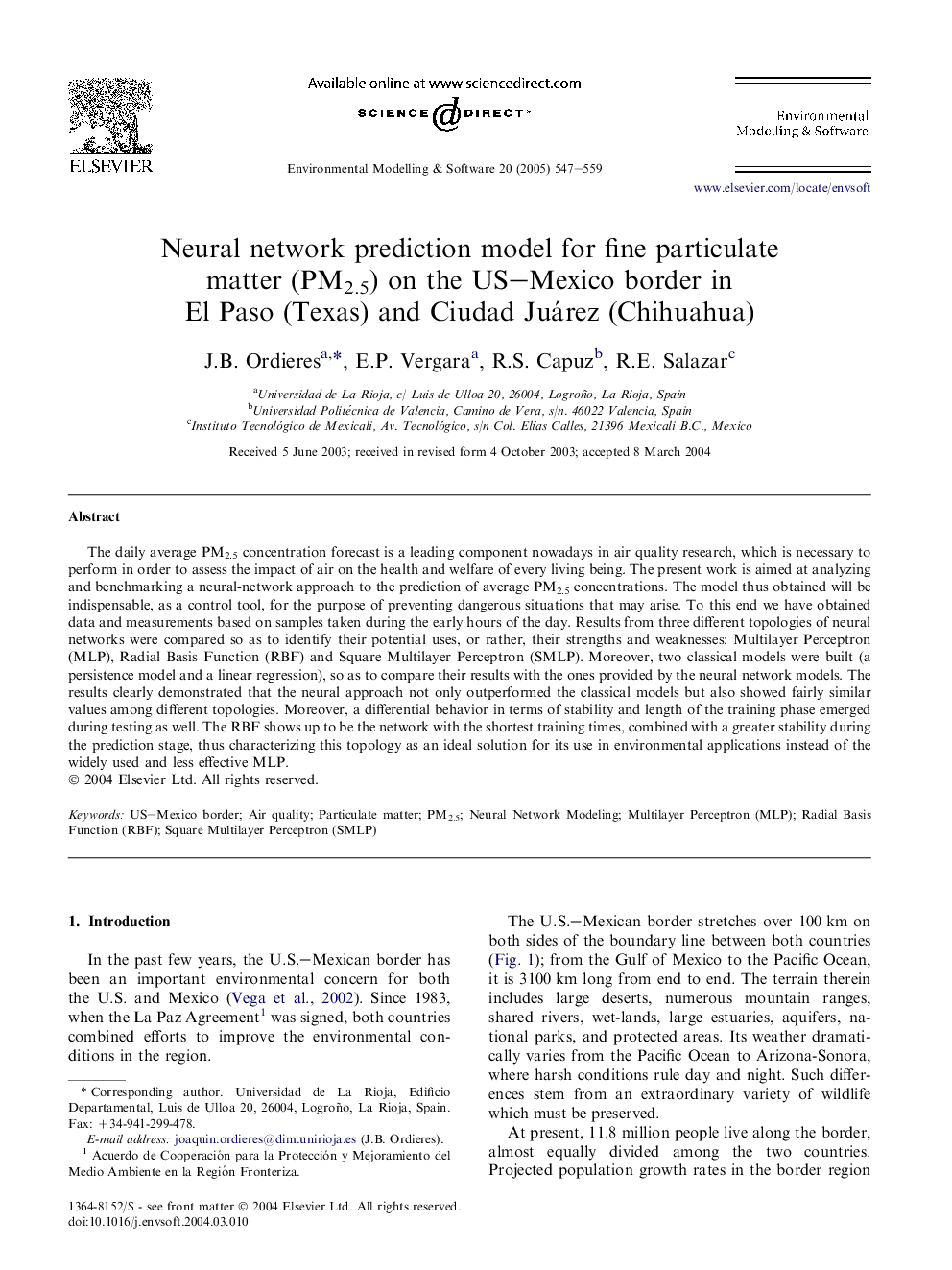| Article ID | Journal | Published Year | Pages | File Type |
|---|---|---|---|---|
| 10371222 | Environmental Modelling & Software | 2005 | 13 Pages |
Abstract
The daily average PM2.5 concentration forecast is a leading component nowadays in air quality research, which is necessary to perform in order to assess the impact of air on the health and welfare of every living being. The present work is aimed at analyzing and benchmarking a neural-network approach to the prediction of average PM2.5 concentrations. The model thus obtained will be indispensable, as a control tool, for the purpose of preventing dangerous situations that may arise. To this end we have obtained data and measurements based on samples taken during the early hours of the day. Results from three different topologies of neural networks were compared so as to identify their potential uses, or rather, their strengths and weaknesses: Multilayer Perceptron (MLP), Radial Basis Function (RBF) and Square Multilayer Perceptron (SMLP). Moreover, two classical models were built (a persistence model and a linear regression), so as to compare their results with the ones provided by the neural network models. The results clearly demonstrated that the neural approach not only outperformed the classical models but also showed fairly similar values among different topologies. Moreover, a differential behavior in terms of stability and length of the training phase emerged during testing as well. The RBF shows up to be the network with the shortest training times, combined with a greater stability during the prediction stage, thus characterizing this topology as an ideal solution for its use in environmental applications instead of the widely used and less effective MLP.
Keywords
Related Topics
Physical Sciences and Engineering
Computer Science
Software
Authors
J.B. Ordieres, E.P. Vergara, R.S. Capuz, R.E. Salazar,
